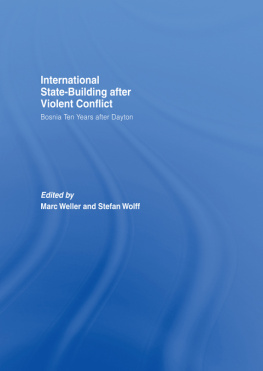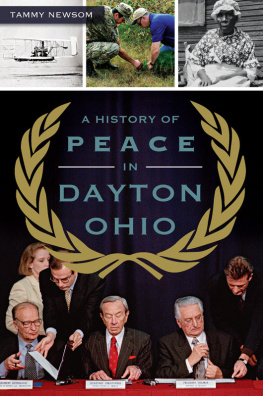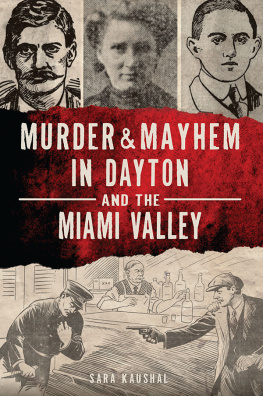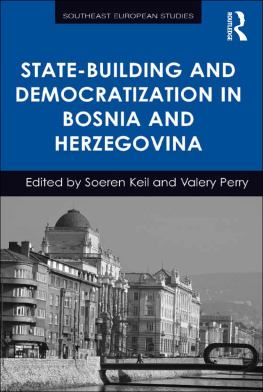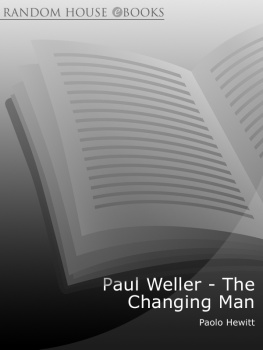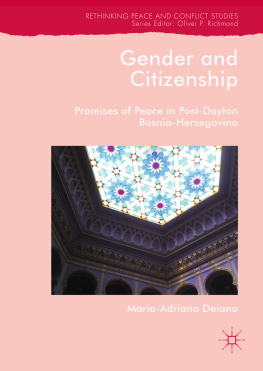International State-Building after Violent Conflict
In December 1995, the Dayton Agreements ended the war in Bosnia and Herzegovina and established a fragile peace between the former conflict parties. The Agreements were widely regarded as both a blessing and a curse from the very beginning. Bosnia and Herzegovina had been subjected to an armed campaign characterized by ethnic cleansing and genocide and the Dayton settlement seemed to freeze the situation on the ground to the benefit of those who had conducted the armed campaign against the Bosnian state and imposed such tremendous suffering on its population. The settlement seemed morally wrong and politically impracticable, but still necessary in order to end violence of a scale and intensity not seen in Europe since the end of the Second World War.
Against this background, the expert contributors to this volume analyse various dimensions of the internationalised state-building process in Bosnia and Hezegovina since 1995 and conclude that internationalised state-building can thus only serve well in the stabilisation of states emerging from conflict if it draws on a well-balanced approach of consociational techniques, moderated by integrative policies, tempered by a wider regional outlook and sustained by resourceful and skilled international involvement. The experience of Bosnia and Herzegovina may not have scored full marks in all of these categories, but even, and perhaps especially where the internationalised state-building effort has lacked in effective policies, important lessons can be gleaned for other similar contemporary and future challenges that the international community no doubt will have to face.
This book was previously published as a special issue of Ethnopolitics.
Marc Weller is the Director of the European Centre for Minority Issues, a reader in international law and relations in the Centre of International Studies in the University of Cambridge and a fellow of the Lauterpacht Research Centre for International Law and of Hughes Hall.
Stefan Wolff is Professor of Political Science at the University of Bath in England, United Kingdom. He holds an M.Phil. in political theory from Magdalene College, Cambridge, and a Ph.D. in political science from the London School of Economics.
First published 2008 by Routledge
2 Park Square, Milton Park, Abingdon, Oxon, OX14 4RN
Simultaneously published in the USA and Canada
by Routledge
711 Third Avenue, New York, NY 10017
Routledge is an imprint of the Taylor & Francis Group, an informa business
2008 Marc Weller, Stefan Wolff
Typeset in Times Roman by Techset Composition, Salisbury, UK
All rights reserved. No part of this book may be reprinted or reproduced or utilised in any form or by any electronic, mechanical, or other means, now known or hereafter invented, including photocopying and recording, or in any information storage or retrieval system, without permission in writing from the publishers.
British Library Cataloguing in Publication Data
A catalogue record for this book is available from the British Library
Library of Congress Cataloging in Publication Data
A catalog record has been requested for this title
ISBN10: 0415-42080-8 (hbk)
ISBN13: 978-0-415-42080-8 (hbk)
Contents
MARC WELLER & STEFAN WOLFF
The Dayton Agreements have been widely regarded as both a blessing and a curse from the very beginning. More formally known as the General Framework Agreement for Peace in Bosnia and Herzegovina, the agreement was initialled, together with 11 annexes and associated documents, at Dayton, OH on 21 November 1995, and formally signed in Paris some three weeks later. The termination of active hostilities in Bosnia and Herzegovina that ensued was greeted with tremendous relief, both inside Bosnia and Herzegovina and on the outside. After all, Bosnia and Herzegovina had been subjected to an armed campaign characterized by ethnic cleansing and genocide. Over 100 000 civilians had been killed and half of Bosnia and Herzegovinas population displaced. However, there was also a sense of great reluctance. The Dayton settlement seemed to freeze the situation on the ground to the benefit of those who had conducted the armed campaign against the Bosnian state and imposed such tremendous suffering on its population. Most observers doubted whether the constitution for Bosnia and Herzegovina, contained in Annex 4 of the Agreement, could last. Instead, there was a general sense that Bosnia and Herzegovina would fall apart, as soon as the quite vast international military presence deployed to the territory was withdrawn. In short, the settlement seemed morally wrong and politically impracticable, but still necessary in order to end violence of a scale and intensity not seen in Europe since the end of the Second World War.
Against this background the obstacles to success for (re)building Bosnia and Herzegovina into a secure, stable and dependable member of the international community appeared overwhelming. In addition to its dubious moral value, given that it apparently rewarded ethnic cleansing, the agreement also lacked domestic legitimacy, but not for this reason alone. It had been negotiated in far-away Dayton, OH, on a US air force base subjected to a state of quarantine until an agreement had been hammered out. The Bosnian Serb and Bosnian Croat communities were not even direct parties to the agreement, which was instead signed by the leaders of the then Federal Republic of Yugoslavia (Serbia and Montenegro) and Croatia in their stead. These leaders, Slobodan Milosevic and Franjo Tudjman, were thus given an opportunity by the international community, albeit grudgingly, to portray themselves as the guarantors of peace and stability in Bosnia and Herzegovina, rather than as key players in, and sponsors of, the conflict during the previous three-and-a-half years. Given the inability and unwillingness of all the parties to settle the conflict peacefully among themselves, the agreement reflected significant input from the international negotiators. Instead of creating a sense of local ownership, there was, not wrongly, a widespread feeling of imposition in Bosnia and Herzegovina.
A further difficulty lay in the structure of the agreement. It appeared to deny to all sides that which they had vigorously sought to achieve during the war. Republika Srpska, the mainly ethnic Serb entity, was denied statehood or association with the then Federal Republic of Yugoslavia. The mainly ethnic Croat entity had already been tied in the Washington Agreement of 1994 into an uneasy federation with the mainly Muslim part of Bosnia and Herzegovina. All three communities were loosely bound together in the shape of a state that appeared to be lacking in most of the powers and institutions necessary for its functioning. At least two of its constituent communitiesSerbs and Croatsthus had little if any real interest in making Bosnia and Herzegovina work as an independent and sovereign member of the international community.
In the following we will discuss three specific dimensions of the internationalized state-building process in Bosnia and Herzegovina over the past 10 years. First, we examine the complexity of the conflict settlement established by the Dayton Accords and the wide range of factors within Bosnia and Herzegovina affecting their success or failure. However, this level of analysis cannot be regarded as sufficient to achieve a full understanding of the dynamics and outcomes of the internationalized state-building process that Bosnia and Herzegovina has undergone over the past 10 years. Thus, we turn our attention to two further dimensionsthe nature and mechanisms of the international communitys post-1995 involvement in the country and the regional context within which this internationally driven, -resourced and -guaranteed state-building venture took place.

